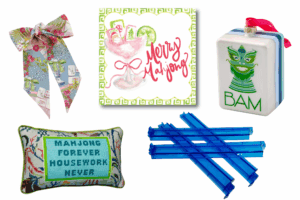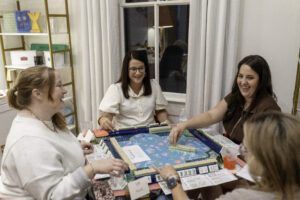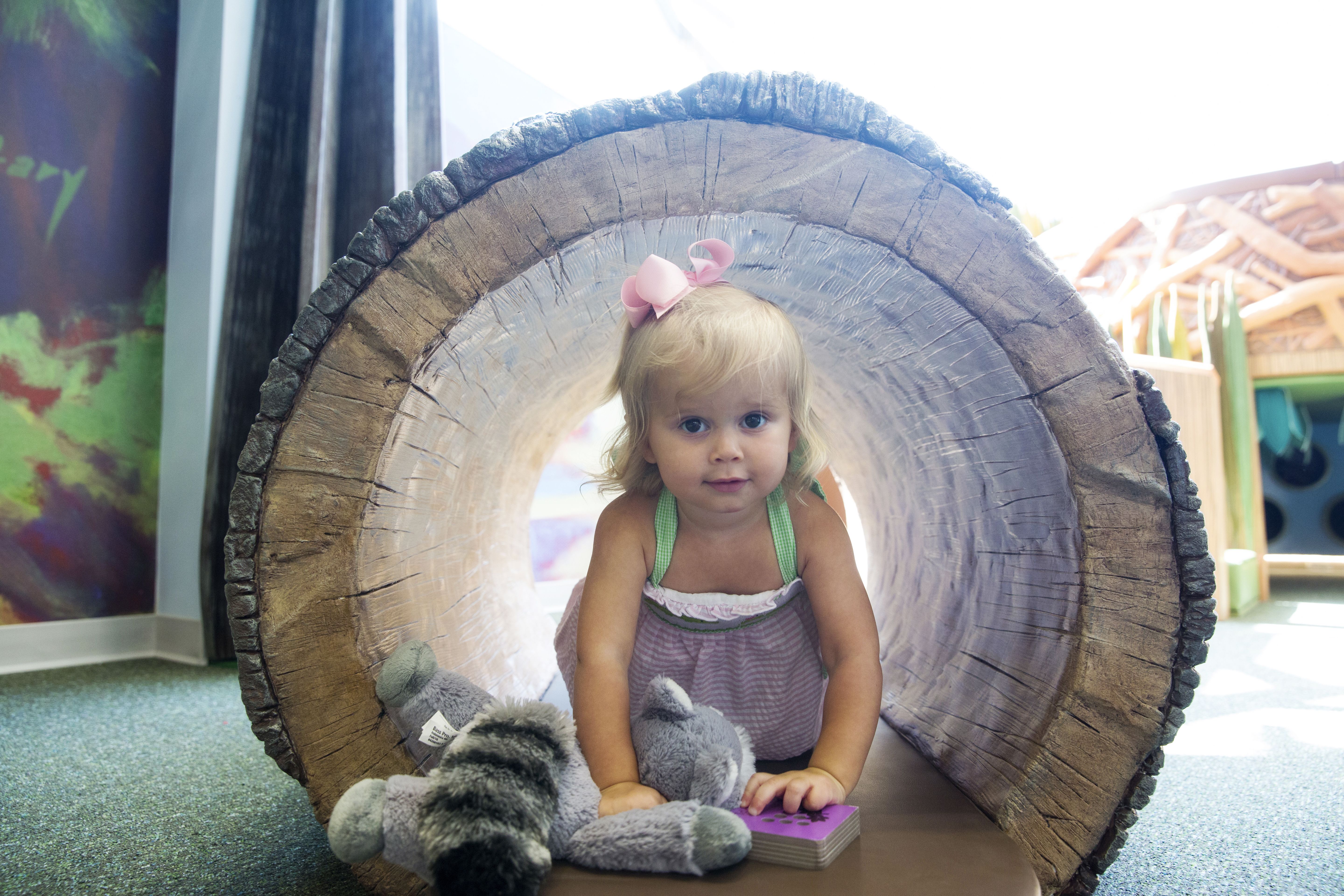
Born on the bayou: Learning comes to life in the Louisiana-themed space for youngest visitors to Knock Knock Children’s Museum
Ever wished you could climb into an eagle’s nest? Or crawl inside a beaver’s den? Would you want to dive inside a catfish’s underwater cave?
All of these adventures await infants and toddlers in the Knock Knock Children’s Museum’s Crawbaby space, designated especially for visitors age 0 to 3. The fun factor is high in this Louisiana-themed area, but don’t think that museum leaders were just playing around when they created it.
“We thought about brain development during the first three years of life and how important it is,” says Knock Knock education chair Cate Heroman, an early childhood expert. “We wanted to appeal to children’s senses, because that’s how they take in information about the world around them. This age is the foundation for everything in life—it’s when neural connections are being made in the brain. So everything in here is really grounded in that brain research.”
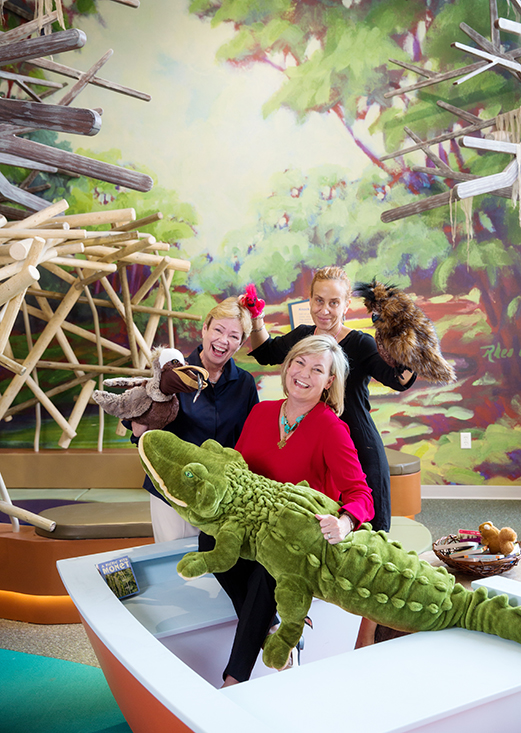
On a sunny day just weeks before the museum’s opening date of Aug. 22, light streams through the towering windows into the Crawbaby learning zone as Heroman points out how toddlers can crawl through cattails made of felt-covered flexible rods, or saunter up the stairs into an oversized eagle’s nest before sliding down the other side.
“Kids like to take safe risks,” she says. “It makes them feel more powerful. And they are using their large muscle groups for climbing.”
Under the eagle’s nest is the cozy catfish cave, into which tots can crawl and explore by reaching into holes to find plush fish or peek into mirrors on the walls. “Children love to see themselves,” Heroman notes. “They also like to be in enclosed spaces.”
In another corner of the space, the beaver’s den is geared toward infants who are crawling. “We wanted them to be able to be away from the other children and protected,” Heroman says. In its center is a soft gel-like pool reminiscent of water, and the whole floor of the den is padded; infants can even use it for tummy time.
“The big idea is to give young children an enriched experience, and something novel to help build their language skills and their mobility skills,” says Heroman.
The walls of the Crawbaby space are covered with oversized murals of colorful paintings created by local artist Rhea Gary and based on Atchafalaya Basin photographs taken by Baton Rouge-based photographer C.C. Lockwood. Gary says she was delighted to have her work become such an integral part of this area of the museum. “I have a real heart for children, so I’m happy to be part of this project,” the artist says. “I now have grandchildren and they will be too old for Knock Knock, but it’s a great addition to the community.”
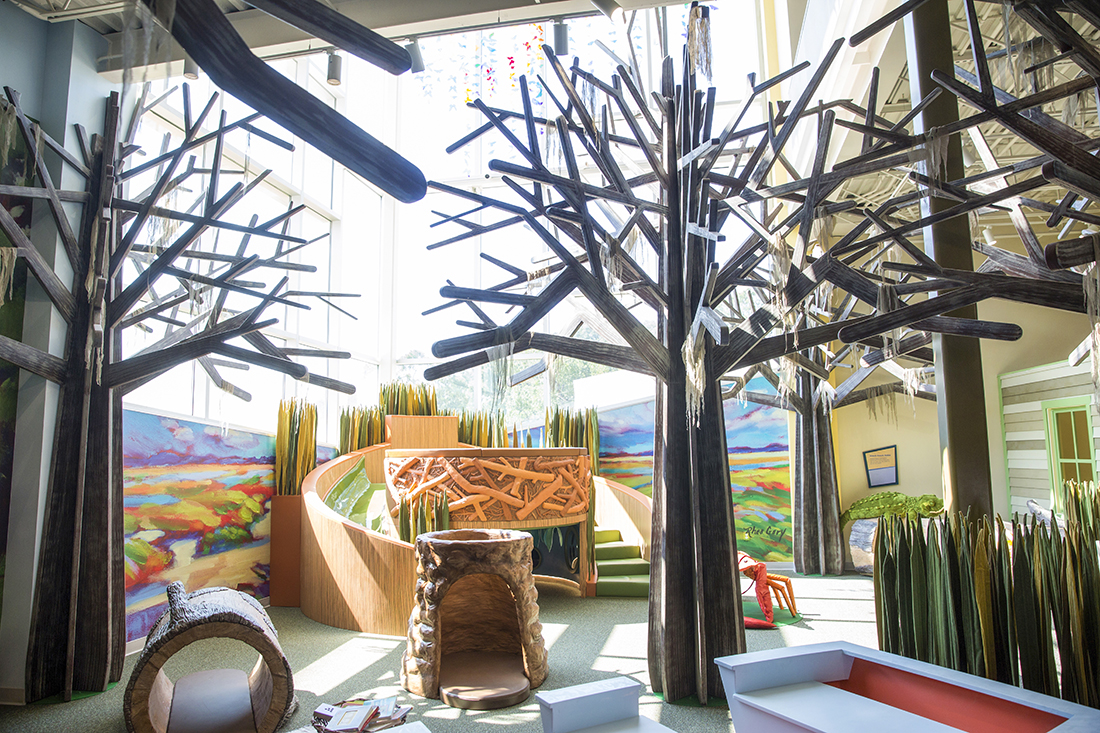
Knock Knock board chair Aza Bowlin, who has been involved with the museum for eight years, says contributions from supporters like Gary have helped the museum become a reality. “We could think of no better backdrop for this Louisiana-themed space than her art,” Bowlin says. “Throughout this project, we’ve seen that time and time again. We’ve certainly had our share of noes, but the yeses have been resounding. And the yeses are from people who understood the vision and realized that this is a community effort and saw themselves as part of that community to make it happen.”
Right beside the Crawbaby area is the Quiet Cabin, a two-part structure that resembles a traditional Louisiana cabin. On one side, a “lactation station” allows mothers to nurse or soothe their young children. On the other, a designated quiet room is designed to be a serene place where kids who are feeling overwhelmed can escape the chaos and regain their composure with help from soothing and sensory-focused toys. In keeping with the aesthetics of the Crawbaby zone, Gary also donated two paintings to hang inside the cabin’s rooms.
Every detail of Crawbaby was considered and reconsidered throughout the museum’s design process, which began with an overall design plan by Cambridge Seven Associates of Massachusetts and continued with the fabrication of specific exhibit elements by the Nashville firm 1220 Exhibits. Heroman and other members of the Knock Knock team made multiple trips to Music City to visit the company’s massive warehouse and see exhibits in their prototype stage. Things were tweaked if the Baton Rougeans felt they weren’t quite right. “They had an odd color for the trees in here at first,” Heroman relates. “So I took a piece of bark off of a cypress tree at my camp in Lake Rosemound, sent it to them in a Ziploc bag, and said, ‘Here, this is the color they should be.”
The Crawbaby area, like of the museum’s learning zones, will eventually also host various special programs—activities like Mommy and Me classes, baby yoga, singalongs or even baby doll circle time to help teach kids empathy. “There is lots of opportunity for programming that will give parents and kids a reason to keep coming back,” says Heroman.
Crawbaby is one of only three of the museum’s 18 learning zones that are still available for sponsorship, notes Bowlin. “This space is one of the largest footprints in the museum, and it’s a great opportunity for someone to make a real contribution in an area that reflects everything Louisiana’s outdoors have to offer,” Bowlin says. “It’s such a magical place.”
For details on sponsorship, memberships, admission and more, visit knockknockmuseum.org.




